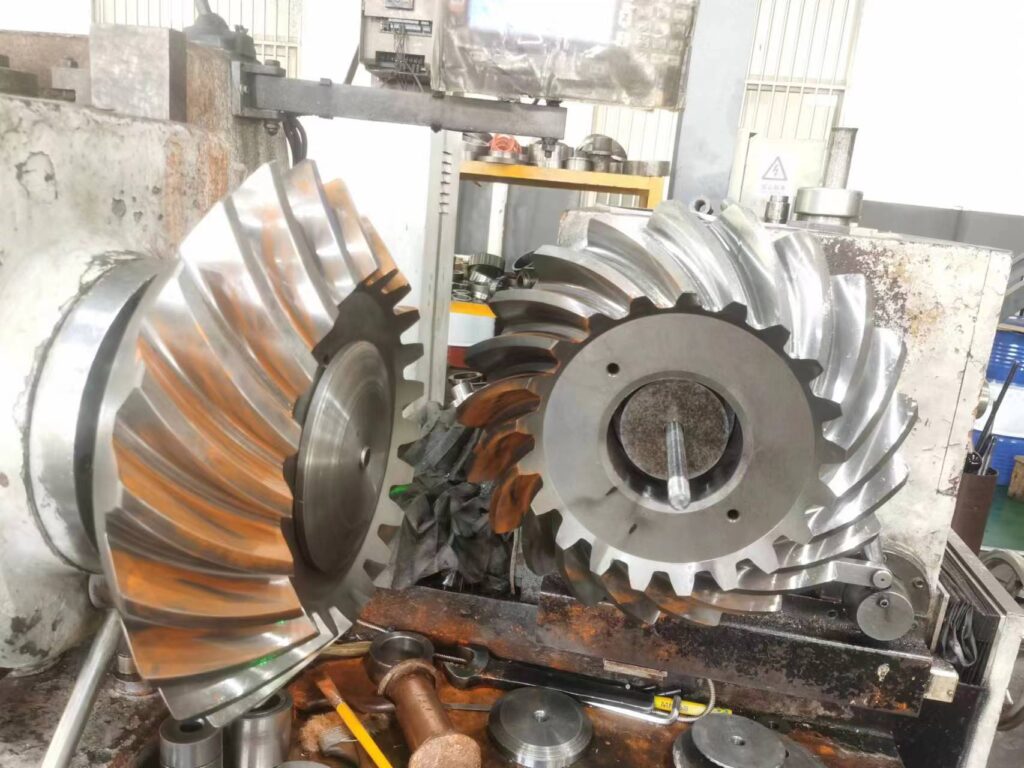When it comes to gear design and transmission performance, one important concept that cannot be overlooked is the contact ratio, often denoted by the Greek letter ε (epsilon). But what exactly is contact ratio, and why is it so crucial in gear systems?
What is Contact Ratio?
The contact ratio in gear transmission refers to the ratio of the actual length of the line of action (the path over which teeth are in contact during rotation) to the base pitch (the distance between corresponding points of adjacent teeth measured along the base circle). It indicates how many teeth are in contact during gear operation.
Formula:
ε = ab / pb
Where:
- ab = Actual length of the line of action
- pb = Base pitch
In theory, a contact ratio of ε ≥ 1 ensures continuous power transmission without interruption. However, for smoother and quieter operation, a higher contact ratio is often preferred. In practice, a minimum recommended contact ratio is usually between 1.1 to 1.2.
Why is Contact Ratio Important?
A higher contact ratio:
- Improves load distribution
- Reduces vibration and noise
- Enhances the smoothness of gear engagement
- Increases transmission stability, especially under heavy or fluctuating loads
How to Improve Gear Contact Ratio
There are several strategies designers and engineers can employ to increase the contact ratio of gear systems:
1. Increase Addendum Coefficient
Raising the addendum (the radial distance between the pitch circle and the tooth tip) increases the line of action length, thereby enhancing contact ratio.
2. Reduce Pressure Angle
Lowering the pressure angle increases the length of the line of contact. However, care must be taken as this might impact the strength and undercut of the teeth.
3. Increase Number of Teeth or Decrease Module
For a fixed center distance, increasing the number of teeth (or reducing the module) will enlarge the pitch diameter and extend the engagement path. For helical gears, increasing the equivalent number of teeth (which depends on the helix angle) also helps.
4. Use Helical or Herringbone Gears
Helical gears offer an additional component of contact ratio known as axial contact ratio, which increases with helix angle (β) and face width (b). Typical helix angles are around 20°–35°. Herringbone gears, which combine two mirrored helices, can achieve even higher total contact ratios.
5. Optimize Profile Shift (Modification Coefficient)
Appropriate use of profile shift coefficients helps in avoiding undercut and increasing tooth thickness, leading to an improved line of contact.
6. Improve Gear Precision and Apply Tooth Modification
High-precision gears (Grade 6 and above) with modifications such as tip relief or crowning can significantly improve contact conditions and increase effective contact ratio.
7. Control Center Distance Tolerance
Maintaining strict control over center distance reduces potential misalignment and ensures that the actual line of contact remains as long as possible.
Summary
The core of increasing contact ratio lies in extending the actual engagement length between teeth and optimizing the contact zone. This can be achieved through a combination of design parameter adjustments (e.g., pressure angle, tooth count, helix angle), structural choices (like using helical or herringbone gears), and manufacturing quality (e.g., accurate machining, surface modification).
For high-speed or heavy-duty applications, ensuring a high contact ratio not only contributes to performance but also to durability and reliability. Thoughtful design and precise manufacturing are essential to achieve this goal.
Thank you for reading. We are looking forward to serving you with our exceptional gear solutions. #BeyondGears
Read More:


